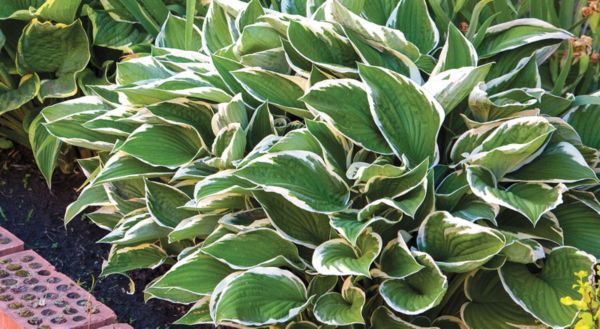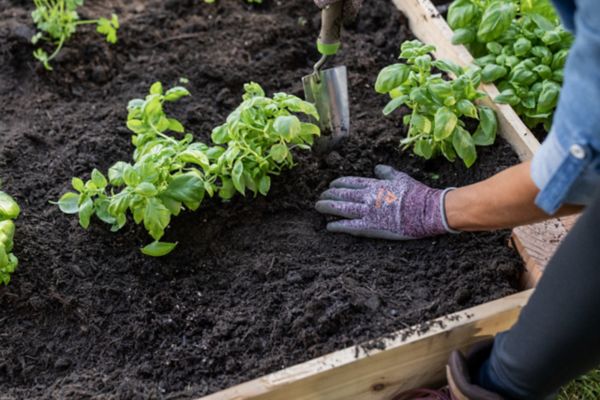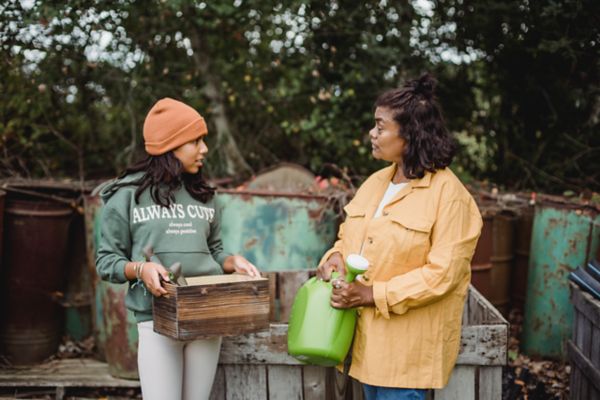How to Grow Apples
Authored by Leah Chester-Davis
Gala, Red Delicious, Fuji, Granny Smith, Honeycrisp, Golden Delicious, McIntosh, Pink Lady, Braeburn, Ambrosia, Arkansas Black, Cameo, Cortland, Mutsu, and Empire are among the varieties that typically can be readily found among the more than 2,500 varieties grown in the United States.
An apple a day... Just think how pleasing it would be to pick an apple from your own tree. Apples are among the most consumed fruits in the world. That popular adage about them keeping the doctor away is due to the many health properties they contain. They are rich in the fiber pectin and low in calories. They also have a low glycemic index which helps keep blood sugar levels low. They have several different vitamins and minerals such as vitamin C and potassium. They have several healthy compounds, among them antioxidants like quercetin, which is known to help protect against inflammation and cancer. The list goes on.
Of course, the bonus is that while this fruit is good for you, it is also tasty, crunchy, and satisfying. And the flavor changes depending on the variety. There are red, green, and yellow varieties.
There is no time like the present to plant a couple of apple trees in your garden.
About apple
| Botanical name: | Malus domestica |
| Common name: | Apple |
| Plant type: | Small Tree |
| Size: | Standard trees 20 to 30 feet tall; semi-dwarf trees 12 to 16 feet tall; dwarf trees 5 to 8 feet tall |
| Sun exposure: | Full sun |
| Soil type: | Many soils but prefer sandy loam to sandy clay loam |
| Soil pH: | 6.0 to 6.5 |
| Hardiness zones: | 3 to 10, depending on species |
| Average first frost: | Varies by region |
| Average last frost: | Varies by region |
| Container friendly: | Yes, dwarf varieties |
| Beginner friendly: | Yes |
Growing

Any type of tree is an investment, so site selection is important. Apple trees need full sun for at least six hours every day, preferably more. Site your trees where they get morning sun, which helps dry the morning dew, reducing the incidence of disease.
Plant at least two varieties that have overlapping bloom periods for cross-pollination. Many nurseries or state Extension offices have charts of bloom times or “pollinator partners” for different varieties.
Apple trees need fertile soil with a pH of 6.0 to 6.5. The site needs to be well drained. They do not like soggy soil. If possible, get your soil tested for recommendations on any needed amendments before planting. Soil test kits are available at most county Extension centers and are free or a nominal fee.
Select varieties suited for your region. Purchase trees from a reputable garden center or nursery.
When buying trees, Arkansas Extension recommends a healthy, one-year-old whip about 2 to 3 feet tall with a ½-inch diameter trunk and a good root system. Steer clear of trees that are stunted, diseased, dried, or shriveled, even if discounted.
When considering trees, you will likely have the choice to select dwarf, semi-dwarf, or standard size trees. Standard trees can grow 20 to 30 feet tall which may not be manageable for home gardeners. Semi-dwarf trees, 12 to 16 feet tall, and dwarf trees, 5 to 8 feet tall, are well suited for home gardeners. Smaller trees are easier to care for when it comes to pruning, spraying, and harvesting. Dwarf trees typically start bearing fruit 2 to 3 years after planting. Standard sizes can take up to 8 years.
Apple vocabulary
A couple of terms you will likely come across when considering apples are “strains” and “spurs” or “non-spurs.”
Strains
According to Extension, some apple cultivars such as Red Delicious and Golden Delicious are available in various strains, which is a mutation of a certain cultivar that has been selected and propagated for an improved characteristic. The most common strain difference is between spur strains and non-spur strains.
Spurs
Spurs are short, stubby, slow-growing, modified stems that support multiple fruit blossoms. Spur-strain trees, because of their compact growth, are ideally suited for home gardeners with limited space.
Non-spur
The fruit spurs and leaf buds are more closely spaced than on nonspur trees and do not grow as large as non-spurs of the same variety.
When buying trees, Arkansas Extension recommends a healthy, one-year-old whip about 2 to 3 feet tall with a ½-inch diameter trunk and a good root system.
Planting

If you have ordered fruit trees from a nursery, they may arrive in bundles. If so, open the bundles and soak the roots in water for 6 to 12 hours before planting. If you have bought a tree in a container at your local garden center, water it thoroughly before planting. Best planting times depend on your region but are typically the fall, late winter, or early spring, as soon as the soil can be worked.
Extension recommends plowing or spading a 10 x 10 area, followed by disking or raking to smooth the surface. Depending on soil test recommendations, add amendments and incorporate into the soil before planting. Dig a hole that is two or three times wider than the root system, large enough to accommodate the roots without cramping or bending them from their natural position.
Set the tree with the graft or bud union 2 inches above the soil line. Fill soil in and around the roots until the hole is half-filled. Tamp the soil lightly with your feet and then finish filling the hole with soil. Tamp it down firmly and make sure it is even with the ground. Water thoroughly after planting.
Mulch the 10 x 10 area, or at least a 3 x 3 area, around the trees with a layer of straw mulch to suppress weeds and to help keep moisture. Avoid piling mulch against the tree trunk. Do not apply weed killers in the root zones of trees. If growing dwarf trees in containers, select large containers that are at least 4 feet in diameter. Fill
It is important to train and prune your trees rather than letting them grow unchecked to become large and unwieldy. When you plant a small, unbranched whip, Georgia Extension recommends pruning it back to 24 to 30 inches from the ground to cause the buds below the cut to grow and form scaffold branches. If you planted branched 1- or 2-year old trees, select four or five lateral branches with wide-angled crotches that are spaced equidistant around the tree and 2 to 5 inches apart vertically. The selected laterals should be no lower than 18 inches above the ground. Prune them back slightly by cutting off one-fourth of each limb’s length. Prune in late winter or early spring.
In the first and second growing seasons the trees will need attention, so they develop a strong central leader and layers of scaffolding to encourage earlier fruit production, better tree shape, stronger crotch angles, and better fruit color. In succeeding years, pruning will be needed to head back the new terminal growth by one-fourth each year and to remove other upright, broken, or diseased limbs. Prune every year in late winter. For beginners, there are plenty of resources to help you step by step. Check with your local Extension office, Master Gardener group, or garden center.
When your trees begin setting fruit, remove excess fruit to help ensure development of the fruit that remains on the tree. Thinning helps result in more favorable fruit shape and size. Thin fruit by hand in late spring or by early summer. Leave one apple per cluster, and space the clusters about every 6 inches.
Fertilizing
- Do not add fertilizer to the planting hole and do not scatter it around the tree after planting. Wait about a month to apply fertilizer. Clemson Extension recommends broadcasting 1 cup of 10-10-10 fertilizer over a 2-foot-wide circle.
Controlling Pests, Diseases, and Other Problems
- Several diseases and pests can affect apple trees. Among them are fire blight, scab, cedar apple rust, powdery mildew, spider mites, aphids, scale, plum curculio, and codling moth. Follow good cultural practices by choosing healthy, good quality, disease-resistant rootstock, giving trees a good start with healthy soil, and supplying proper weed suppression and irrigation. Even then, pesticides may be needed to control pests and diseases. Contact your county Extension agent for home orchard spray guidelines. Follow label directions.
Harvesting and Storing

Harvest time depends on the variety you are growing and whether it is an early, mid-season or late season apple. When the fruit is fully colored, give it a taste test. If it is too starchy, wait a few more days and test again.
Handle apples carefully to avoid injuring the fruit.
Storing
Apples have a long storage life if stored in a cold environment such as a refrigerator or a cold basement or enclosed porch. The temperature does not need to dip below 32 degrees F. If you are storing Honeycrisp, the temperature will need to remain at about 37 degrees F. Some people wrap apples individually in newspapers to store them.
Apples can be canned whole or made into applesauce or apple butter and canned. They can be dried. They can even be frozen, though they may not remain at highest quality.
Apples have a long storage life if stored in a cold environment such as a refrigerator or a cold basement or enclosed porch. The temperature does not need to dip below 32 degrees F.
Expert Tips

- Pay attention to site selection, plant in well-prepared, healthy soil, select disease-resistant varieties suited to your region, and give trees proper and timely care.
- Dwarfing rootstocks are attractive to home gardeners. They bear earlier, require less pruning, possibly need fewer pesticides, are easier to harvest, and require less space. Most state Extension offices will have apple growing guides for different regions and some may even offer workshops, which are usually well worth your time.
Frequently asked questions
How long will it take for my apple tree to bear fruit?
Dwarf apple trees typically start bearing fruit 2 to 3 years after planting. Standard type trees can take up to 8 years.
How often do I need to prune my apple trees?
Annually is the best bet to keep them healthy and productive.
Why doesn’t my tree produce fruit?
There could be several reasons. It may have not reached bearing age, or it may not have a pollinating cultivar near it. Other reasons could be too much nitrogen or shade, improper pruning, or absence of pollinating insects. Or it may have been attacked by insect pests or diseases.





